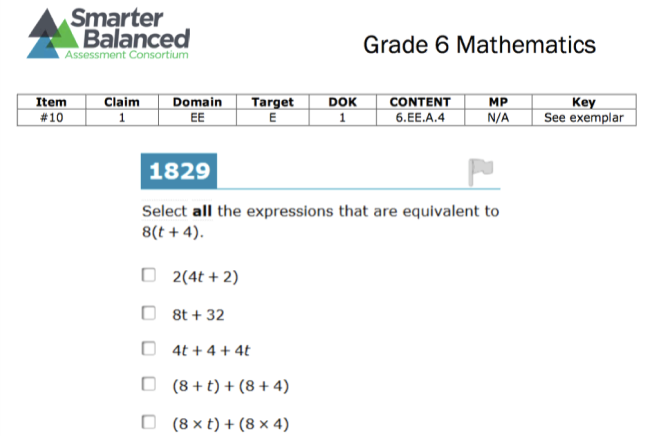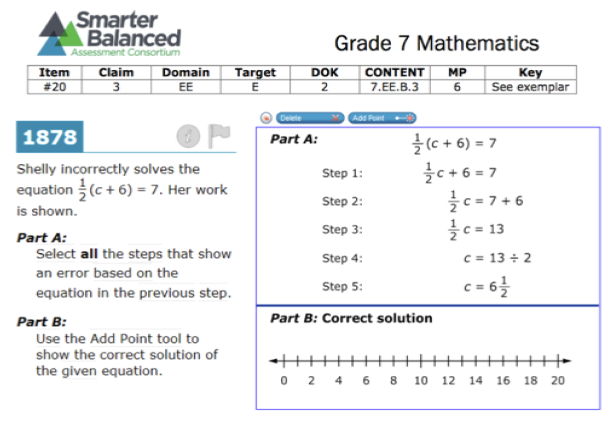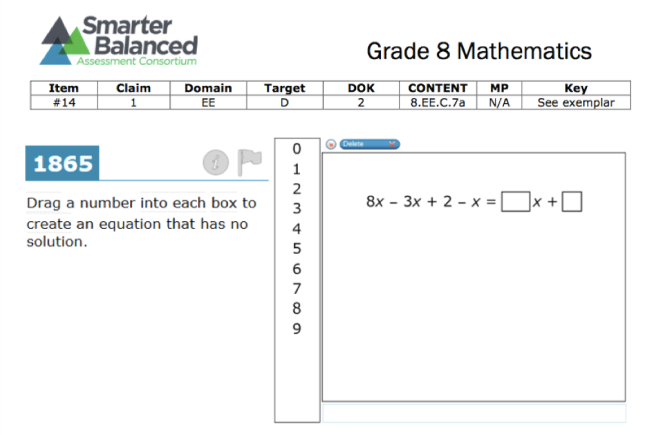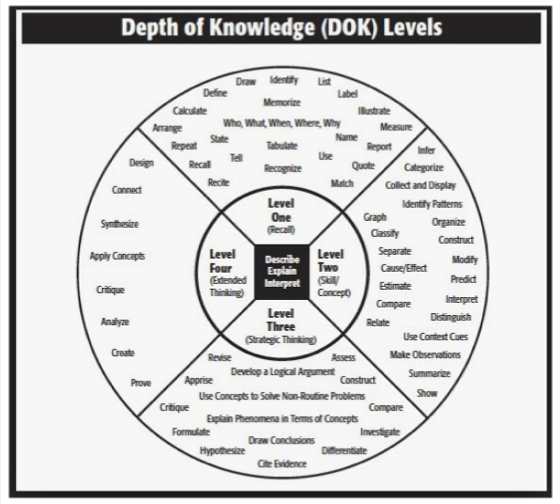“Correct answers are essential… but they’re part of the process, they’re not the product. The product is the math the kids walk away with in their heads…” – Phil Daro, co-author of CCSM
SBAC (or CAASPP, if you prefer) and how to prep for it while keeping the focus on learning and the stress level low. 
So how do we know what students have in their heads? One formative assessment approach is to use the SBAC practice questions-my CPM students tackle them with aplomb, and enjoy seeing the answer keys and details behind each one. I learn as much as they do as we take each one apart and see what makes it tick.
Common Core has a deliberate sequence of skills that follow from 6th to 7th to 8th grade. We can see a little of the sequence in the practice problems below from SBAC. If we look at the computerized assessments as a video game, then students can” level up” each year. (See the progressions here: fascinating, and not light going-you may need a glass of wine!
https://www.illustrativemathematics.org/progressions)
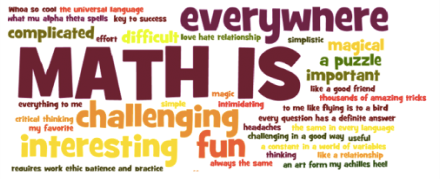 One low impact way to teach the curriculum and prep kids for the test can be paper & pencil warm ups such as these, taken from the practice problem sets.
One low impact way to teach the curriculum and prep kids for the test can be paper & pencil warm ups such as these, taken from the practice problem sets.
The following 3 practice questions are my attempt to show a progression from the SBAC. Links are provided for easy access.
Grab paper & pencil and actually solve these 3 problems- you’ll learn a lot
- 6th grade Expressions & Equations DOK 21…will you find them all?
(http://www.caaspp.org/rsc/resources/2015_Grade6Math.pdf)
Note: Multiple choice has not gone away, but it is in a new form, how many “8t+34”s will 6th graders find? They can mark them all 🙂
- 7th grade Expressions & Equations DOK 2; Part B looks evil but has an easy out…
(http://www.caaspp.org/rsc/resources/2015_Grade7Math.pdf)
Part B Note: ½ (anything)=7, the “anything” has to be 14…see the shortcut? (c+6) has to =14J. The advantage of CCSM is that kids get to explore the cool alternative methods to solve!
- 8th grade Expressions & Equations DOK 2; who actually reads the directions these days?
(http://www.caaspp.org/rsc/resources/2015_Grade8Math.pdf)
Note: (I could do this all day!) The temptation is to skip the directions and zoom to a fast, wrong answer…4x+2, right? Kids definitely need to learn to READ, even in math class! Oh, “no solution” you say? Now the DOK 2 makes a little more sense. 4x + anything but 2 is the correct answer on this one.
Time for a huge parenthetical note (I have a big parenthetical note addiction):
Did you notice the Depth of Knowledge (DOK) level? My 8th graders are very interested in DOK now, and they critique many class problems as to level.
Not all educators are crazy about this graphic, but it does for a start- a good 4 minute video is at http://schools.nyc.gov/Academics/CommonCoreLibrary/ProfessionalLearning/DOK/default.htm
If you want to nerd out further on DOK, http://svesd.net/files/DOK_Question_Stems.pdf is a good place to start.) (End of parentheses!…For now.)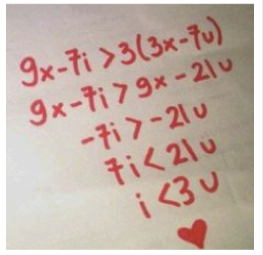
To wrap up for February: Over several months, I have seen students learn a lot about content and format from using the SBAC practice problems as warm ups one problem at a time. They are easy to correlate to the lessons we have done through out the year, and offer a low stress method to set each student up for a comfortable and familiar feeling during testing. You can contact me at bethbaker52@gmail.com to further this discussion and offer any tips you have for using SBAC to implement or support the CCSMJ
Next month: Cooperative learning and why it’s worth it.

